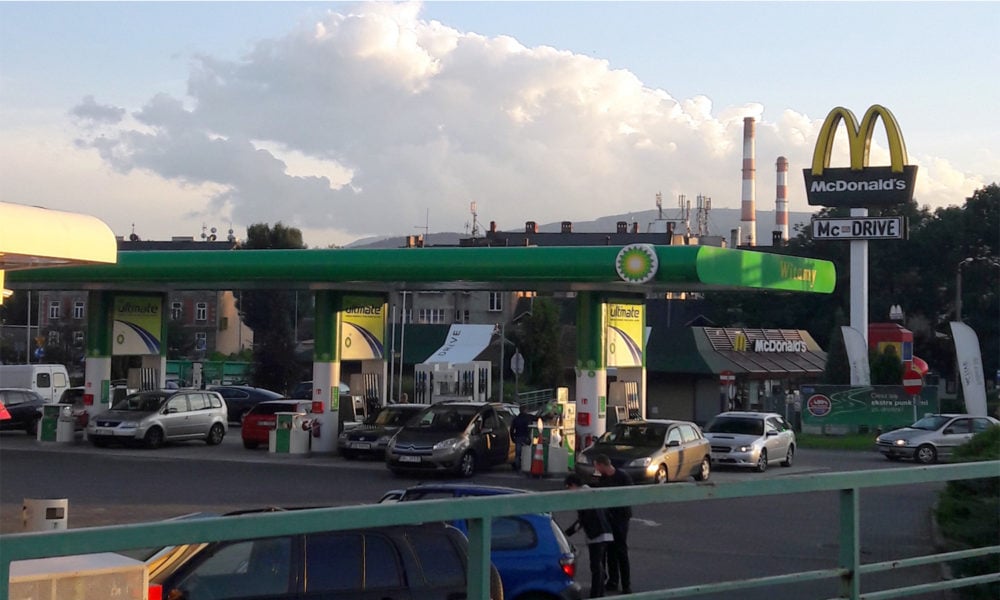It’s difficult to focus on any news outside the pandemic at this moment. For information on COVID-19, we recommend the CDC for the most up-to-date news. Our coverage of the novel coronavirus can be found here.
In non-pandemic news from the last week, BP’s freshly released 2019 annual report offers a glimmer of insight into how it intends to meet the climate ambitions it set out last month with much fanfare.
The company essentially reiterated pledges made a few weeks ago to reduce carbon emissions from its operations and the oil and gas it extracts to net-zero by 2050, as well as to reduce the carbon intensity of its sold products by 50 percent. Achieving these goals would bring the company closer to alignment with the Paris Agreement’s global temperature target. This is the first time BP has acknowledged responsibility for its scope 3 emissions, which come from the burning of its oil and gas products and make up nearly 90 percent of the company’s total emissions.
BP pledges more ambitious than those made by peers
BP resisted shareholder demands to include these emissions in company targets in 2019, but it has been forced to respond to growing pressure from the investor community and climate activists to get on board with climate action or get out of the way.
My UCS colleague Kathy Mulvey commented on BP’s move here. In a quick summary, we found the pledge to be more ambitious than those made by Chevron, ExxonMobil, and most other major fossil fuel companies. The lack of clarity and detail around BP’s strategy and near-term plans until September, however, has made us hold back applause.
Until we have more information and a clear plan of action, we can’t clearly assess whether BP’s announcement is a watershed moment for the industry or just more empty promises.
What do these pledges actually mean?
BP’s stated ambition is to become a net-zero energy company by 2050 or sooner–this includes emissions from its operations (scope 1 & 2) and the emissions from the burning of its products (scope 3). BP made it clear that its net zero pledge is limited to scope 3 emissions from the burning of the products that the company itself “dug up” (or “produced”—I’ll use that term in the rest of this blog).
But BP has also pledged to reduce the scope 3 emissions intensity of the products it sells (oil and gas extracted by other companies and sold to BP to refine, trade, or sell) by 50 percent by 2050.
We’ve looked at the numbers for 2019 to get a clearer picture.
- BP’s 2019 scope 1 & scope 2 emissions: 54.4 MteCO2e
- BP’s 2019 scope 3 emissions from oil and gas extracted by BP itself: 360 MteCO2e
- BP’s 2019 sold scope 3 emissions: ?

BP 2019 greenhouse gas emissions
Emissions Intensity Reduction Comes Down to Oil Sold vs. Oil “Produced”
So our real questions center around BP’s sold product commitment. Just how much does the company sell versus how much it “produced”?
We’ve tried to answer this question with a variety of calculations, but BP isn’t making it easy for us.
What we don’t know:
- The company hasn’t specified whether BP-“produced” oil and gas, which is part of the net-zero ambition, is also included in the ambition to reduce the intensity of BP-sold oil and gas by 50 percent. The report discloses how much oil BP sells per year, but doesn’t break that down by how much of the sold oil is “produced” by BP, and there is no disclosure on the amount of gas sold by the company.
- The company also discloses the lifecycle emissions intensity of all BP-sold products, presumably with BP-“produced” products included, but it doesn’t break out that information or specify the individual products encompassed. How the company interprets which products are included or excluded from this 50 percent emissions intensity reduction could affect the total emissions reduced by an order of magnitude.
- The lack of standardization across the industry on climate-related financial disclosures has allowed companies to pick and choose their emissions metrics and disclosure without oversight or consistency.

BP’s emissions intensity estimate, from 2019 annual report

BP’s oil sales, from 2019 annual report
Our calculation:
By our best estimate, BP sells eight times as much oil as it produces, and four times as much oil and gas as it produces. In order to meet its emissions goal for sold products, assuming the numbers here stay relatively constant, the company will have to reduce the emissions of its sold products by more than its reported 2018 scope 3 emissions–437,000,000 metric tonnes of CO2 equivalent.
So that means that BP has to reduce the emissions of more than 7.6 million (7,662,000) barrels of oil per day by between 38 and 50 percent.
How will BP actually get us to net-zero?
Given multiple mentions in BP’s annual report and CEO Bernard Looney’s presentation, we can expect that BP will be increasing its investment in carbon capture and storage (CCS) research either directly or indirectly. There are also several mentions of land-use offsets, so we can be certain those will be included somewhere in this plan, but don’t know the extent.
Note: While land-use offsets, including agricultural and rainforest offsets, have become much more popular in the last few years with corporations trying to lower their carbon footprints, in reality, offset programs are sometimes highly questionable and the industry as a whole is poorly regulated.
Reforestation alone does not provide enough carbon dioxide removal to reach the Paris Agreement’s global temperature goals without deep decarbonization and would require considerably more land than can be devoted to trees. Therefore, any discussion of offsets by BP should come with strong support for standardizing and regulating the offsets market for scalability.
Again, our largest unknowns are how BP plans to reduce the carbon intensity of its sold products. BP’s options are likely limited to CCS, offsets, and supplier action. It would be a first for BP to put direct pressure on its suppliers, which are likely smaller exploration and production (E&P) companies that have historically resisted sustainability measures.
What we would love to see (BP, we know you’re reading this), along with details on emission reduction strategy and a variety of short- and medium-term targets, is a standardized supplier code of conduct for emissions.
Right now, companies with complicated supply chains often require their suppliers to sign a set of rules dictating fair human rights and labor standards. BP could enact real change within a small and stubborn industry if it demanded its suppliers take action to lower their emissions, ideally in a transparent and consistent way across the industry.
I won’t hold my breath, but it would be a game-changer for a highly visible carbon major to push for better transparency and standardized metrics for emission reduction commitments and climate change disclosure.
BP Stays with American Petroleum Institute
In the end, it’s March and we won’t have a full picture till September. But BP did come through on its promise to publish a trade association review and left the Western States Petroleum Association (WSPA), Western Energy Alliance (WEA), and American Fuel and Petrochemical Manufacturers (AFPM) over climate policy misalignment.
It was a good start, but BP decided to stay with the American Petroleum Institute (API) despite the company’s public disagreement with the trade association over federal regulation of methane emissions. We hope BP’s implementation of its net-zero ambition is not equally patchy. BP has come out with a significant statement, but we’ll have to wait until September to see if the company really intends to act on it.

